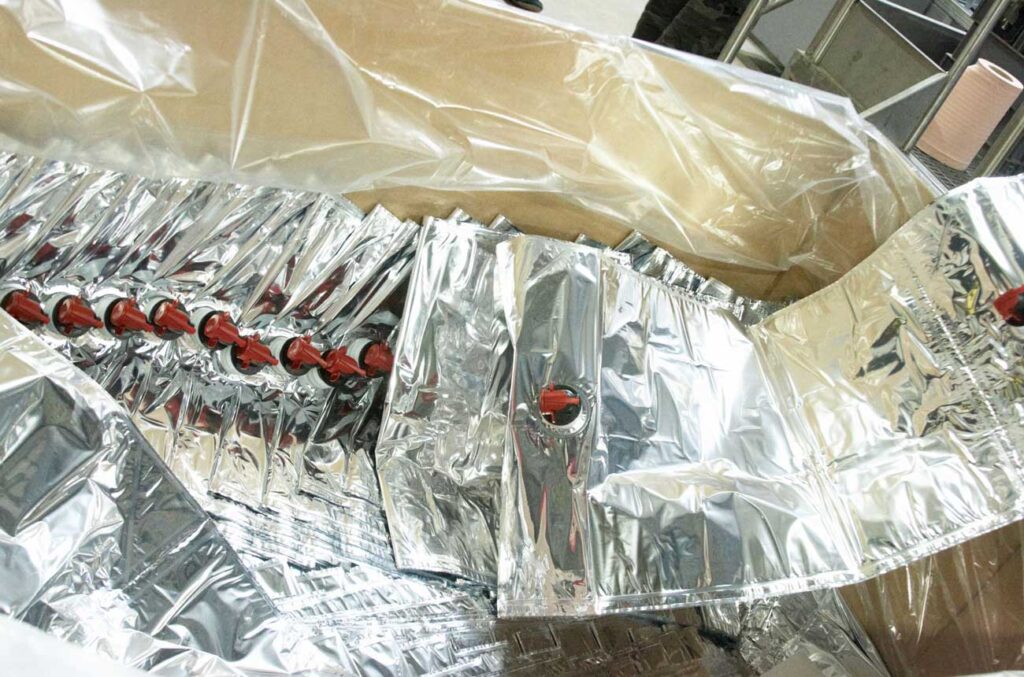When screw-cap bottles were first introduced, there was a lot of skepticism about the quality of the wine inside. Now, they are globally accepted and even supported. The same applies to wine in alternative forms.
The bags in the box category have made great strides over the past few years, not only in terms of the quality of the wine inside, but also in the manufacturing of the bags and boxes themselves. Technology has improved so that wine stays fresher longer, and bags and taps can be recycled more easily.
In Scandinavia, consumption of boxed wine and general acceptance of alternative packaging is exceptionally high; More than half of the wine consumed in Sweden comes from a bag in a box. While the UK is a bit far behind, the market is growing, helped by the fantastic range of premium wine bags that can now be found.
Why we love bag in box
comfort
The flexibility of being able to have just one cup and not worry about spoiling the bottle should not be underestimated. They're also portable and easy to share at dinners, events, and while traveling.
Mindful drinking
Reducing carbon emissions is something front and center in the fight against climate change, and in that sense it's hard to fault the sustainability credentials of bagged wine. According to a widely cited study commissioned by Finnish state alcohol monopoly Alko (published in 2018), the equivalent carbon emissions from producing glass bottles are about 10 times higher than those from box-packaged bags. Since 90% of wine's carbon footprint comes from packaging and transportation, this is important. An open letter to the UK Government in November 2022, submitted by the Alternative Formats Wine Merchants Association and signed by key members of the UK wine trade, called for action to promote the switch from glass wine bottles to alternative packaging.
The bag-in-box recycling process is also less energy-intensive, as cardboard is widely recycled and the plastic interiors are sent to specialized factories, broken down into oils and reused. Australian canned brand Hey Tomorrow has called it “Forward Drinking”.
Quality
The increased availability of fine wines in box-style bags has opened the floodgates, encouraging more top-tier producers to adopt this format, thus providing wine drinkers with more variety and thus creating growth in the sector.
With its low carbon footprint, this truly is one of the most sustainable ways to buy and consume wine for early drinking. Of course, bottles remain the only viable option for aging and cellaring wine, but most wine is made and purchased for immediate consumption.
Savor the judgment
We tasted more than 70 cases of bottled wine to arrive at this selection – some of the best quality and most interesting wines available in this format in the UK. However, this seems to be reflected in the price. While there are single wines in the range that equate to around £4.75 per 75cl bottle, the average price per 75cl is just under £12.
White wines performed better overall, which is reflected in the higher proportion of white wines in the selection. The only orange wine in the tasting was chosen because it provided a great aromatic presentation – this natural wine is perfect for sharing bags in the box, but I would say drink it within a couple of weeks of opening. This is also one of two types of wine in a bag, which is basically a bagged bag in a box with an extra layer of aluminum – better at preserving the wine, but a little harder to recycle.
Although some say the bag in the box will last six to eight weeks once opened, most of it should be consumed within three to four weeks, to ensure the wine stays as fresh as possible. As for how long the wine will last before opening, “We work on the basis that it will be consumed within nine to 12 months of production,” says Laura Riches, co-founder of the Laylo brand, while Olly Lea, co-founder of Laylo, says BIB Wine Co “We advise our customers to drink it within three months.”
This tasting was a real eye opener. Yes, about 40% of wines tasted have proven to be disappointingly commercial – the worst wines being unbalanced, overly manufactured and one-dimensional – so wine drinkers need to do their research and choose wisely. But this selection clearly shows that great and distinguished wines exist in this format.
Natalie Earle has 26 cases of wine to try
{}
{“wineId”: “65267”, “displayCase”: “standard”, “paywall”: true}
{“wineId”: “57010”, “displayCase”: “standard”, “paywall”: true}
{“wineId”: “65270”, “displayCase”: “standard”, “paywall”: true}
{“wineId”: “65268”, “displayCase”: “standard”, “paywall”: true}
{“wineId”: “65269”, “displayCase”: “standard”, “paywall”: true}
{“wineId”: “65271”, “displayCase”: “standard”, “paywall”: true}
{“wineId”: “65272”, “displayCase”: “standard”, “paywall”: true}
{“wineId”: “65273”, “displayCase”: “standard”, “paywall”: true}
{“wineId”: “65274”, “displayCase”: “standard”, “paywall”: true}
{“wineId”: “65277”, “displayCase”: “standard”, “paywall”: true}
{“wineId”: “65276”, “displayCase”: “standard”, “paywall”: true}
{“wineId”: “65275”, “displayCase”: “standard”, “paywall”: true}
{“wineId”: “65279”, “displayCase”: “standard”, “paywall”: true}
{“wineId”: “65278”, “displayCase”: “standard”, “paywall”: true}
{“wineId”: “65280”, “displayCase”: “standard”, “paywall”: true}
{“wineId”: “62447”, “displayCase”: “standard”, “paywall”: true}
{“wineId”: “62449”, “displayCase”: “standard”, “paywall”: true}
{“wineId”: “62443”, “displayCase”: “standard”, “paywall”: true}
{“wineId”: “65281”, “displayCase”: “standard”, “paywall”: true}
{“wineId”: “65283”, “displayCase”: “standard”, “paywall”: true}
{“wineId”: “65282”, “displayCase”: “standard”, “paywall”: true}
{“wineId”: “65285”, “displayCase”: “standard”, “paywall”: true}
{“wineId”: “65284”, “displayCase”: “standard”, “paywall”: true}
{“wineId”: “65286”, “displayCase”: “standard”, “paywall”: true}
{“wineId”: “65288”, “displayCase”: “standard”, “paywall”: true}
{“wineId”: “65287”, “displayCase”: “standard”, “paywall”: true}
{}


